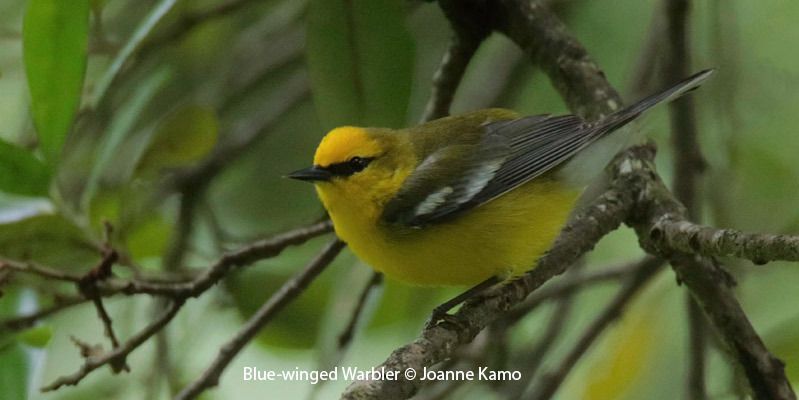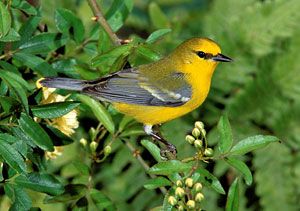
© Alan Murphy
Blue-winged Warbler
Vermivora cyanoptera
Family: (Parulidae) Wood-Warblers
Preferred Habitat: Thickets; edges of fields, pastures and woods with young trees
Seasonal Occurrence: Most common in early and mid-April; fall migration is mid-September to early October
Profile by Grace Yaros: Blue-winged Warblers are small, dashing warblers; males have brilliant yellow faces and underparts with greenish backs and light blue-gray wings, two contrasting white wing-bars, and a thick black eye-line. Females are very similar to males, but have more green coloration in the face and dusky gray eye-lines. They are often heard before they are seen; listen for the male’s buzzy, sighing “bee, buzz” song, with the first note higher pitched than the second.
These warblers breed in early- and mid-successional habitats with dense herbaceous cover and scattered shrubs and small trees. Historically, these birds bred from the Ozark Mountains east through Tennessee and Kentucky. Their range expanded northward and eastward as early European settlers converted forests into farmland, and abandoned fields grew unchecked and became ideal sites for these birds to raise their young. Recently, however, their populations in the Northeast have started to decline as many of their preferred shrubby fields naturally revert back to forest. Habitat loss due to urban development is also a threat to these birds. Blue-winged Warblers are migratory, and their primary winter range extends from Mexico to Honduras, with some birds wintering further south through Panama and in the Caribbean.
Blue-winged Warblers hybridize with the less common Golden-winged Warbler where their ranges overlap in the Appalachians and the northeastern U.S. Hybrids can be varied in appearance, ranging from individuals that almost entirely resemble either one of the two species, to individuals that inherit a mix of traits from both parents, including hybrids known as Brewster’s Warblers and Lawrence’s Warblers. Brewster’s Warblers mostly resemble their Golden-winged parents, but with the plain throat and black eye-line of their Blue-winged parents. The rare Lawrence’s Warbler, on the other hand, largely resembles Blue-winged Warblers, but with the black throat and mask of a Golden-winged Warbler. Hybrid individuals may sing the song of either species.
Blue-winged Warblers are common migrants in High Island throughout April. They can be seen at any of the Houston Audubon sanctuaries, including Boy Scout Woods Bird Sanctuary, Smith Oaks Bird Sanctuary, and Texas Ornithological Society’s Hooks Woods Sanctuary.
-
Cornell Lab of Ornithology
-
Bird Guide
-
Bird Library
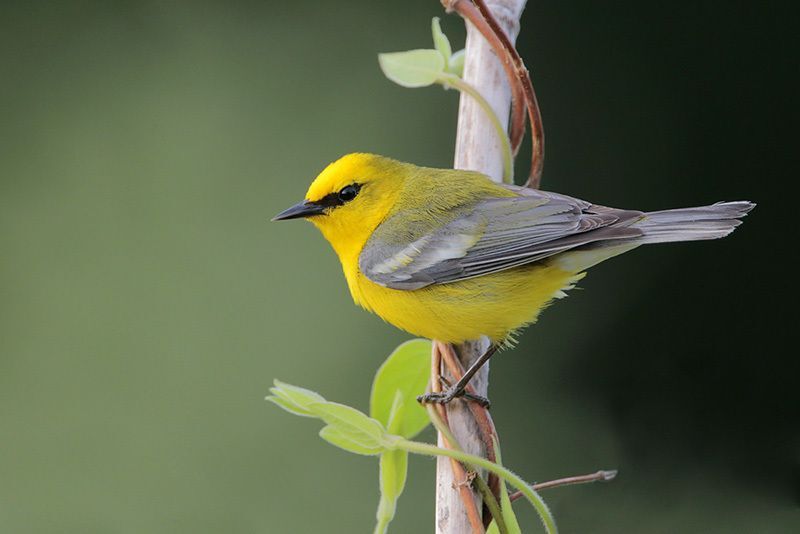
© Greg Lavaty, www.texastargetbirds.com
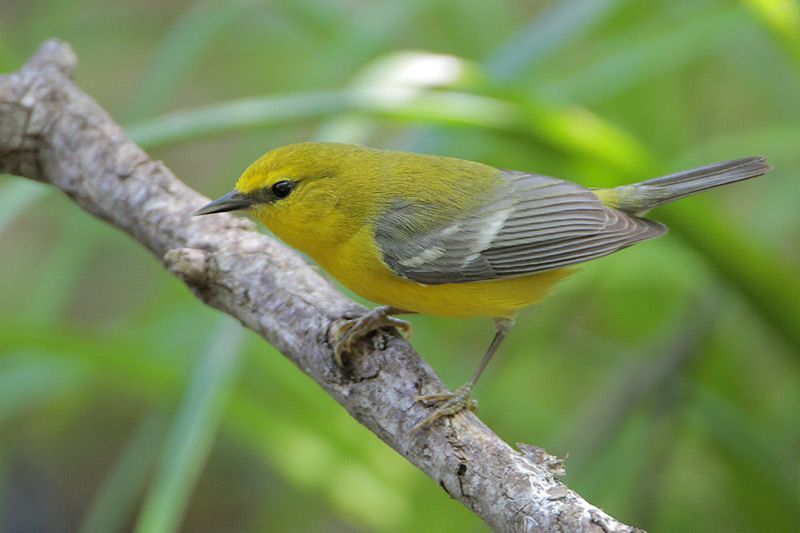
© Greg Lavaty, www.texastargetbirds.com
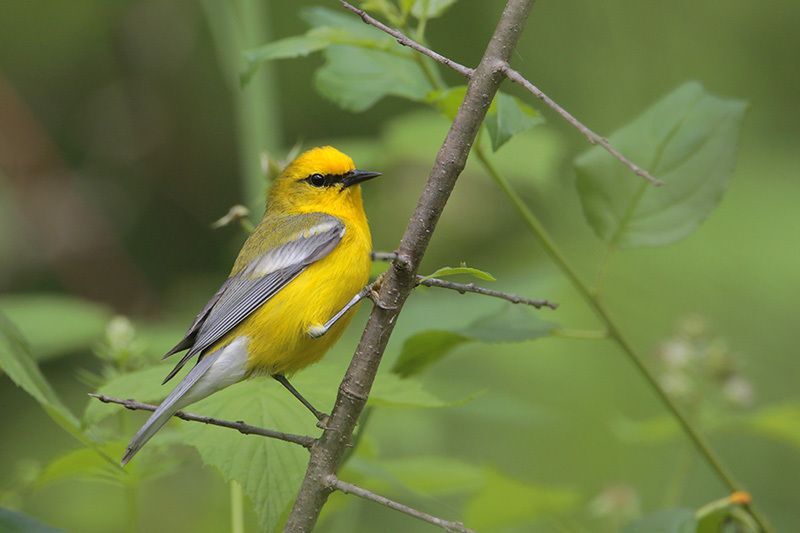
© Greg Lavaty, www.texastargetbirds.com

